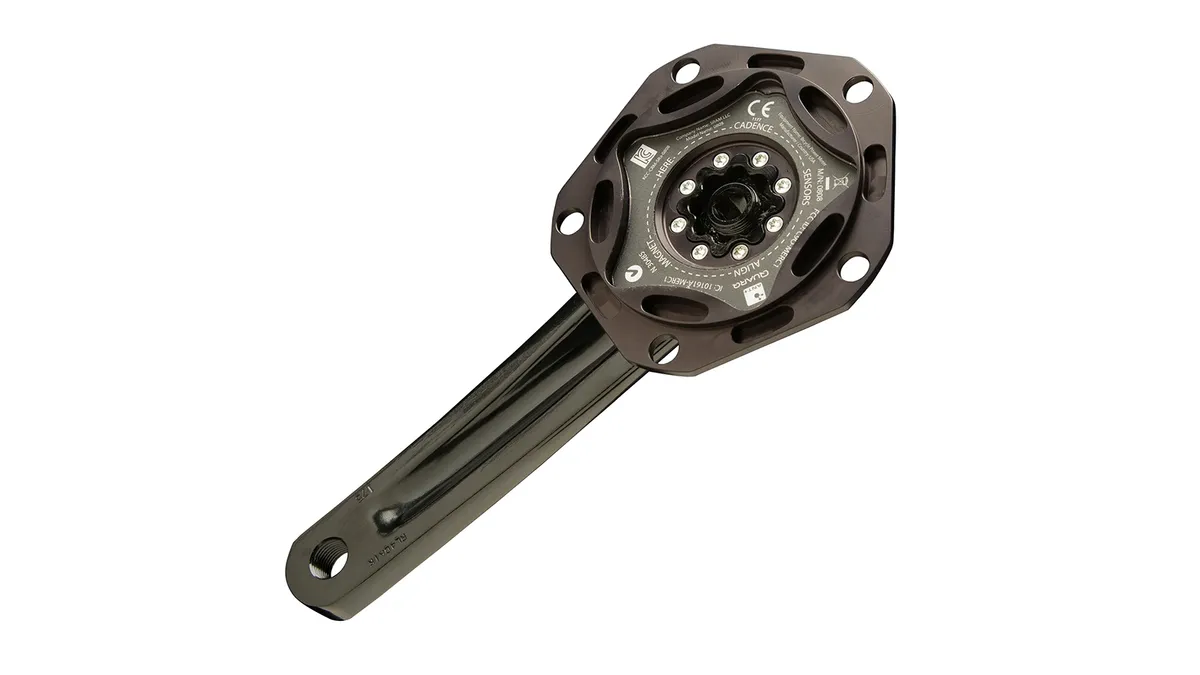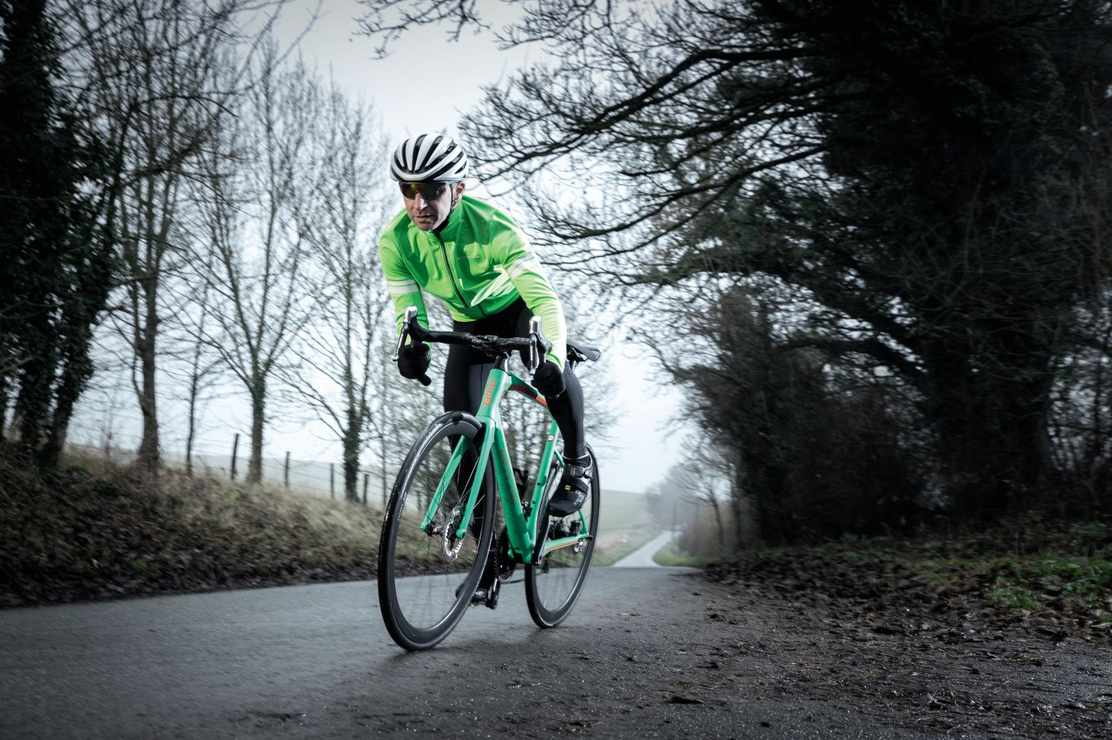Quarq’s road-power meter range extends to five crank-based units, with two further retro-fittable spider options. Beneath the range-topping Shimano four-bolt ring-compatible Elsa RS model are SRAM Red, Elsa R, and Riken R options. All of these share stiff and light carbon cranks, which limits their starting price, but the new forged aluminium Riken AL has changed that.
- Highs: Tough, robust and reliable performance
- Lows: Forged alloy is a bit heavy
The Riken AL is available in 130 BCD (bolt circle diameter) or 110 BCD sizes. It doesn’t come with chainrings, but accepts 10-speed Shimano numbers, and many other 10- or 11-speed rings – so you may be able to continue with those you already have. There are 24mm GXP and 30mm BB30 axle options too, with the latter costing a little extra.

The Riken AL is available in 130 BCD or 110 BCD sizes
We tested a Riken AL with GXP axle, 175mm cranks and 110 BCD, and fitted a single 38t SRAM X-Sync ring, but it’ll run two rings as well. The cranks, axle, spider and all hardware weigh 854g, or 924g including the ring, just 159g heavier than the carbon Riken R in 130 BCD format.
The weight difference between the Riken AL and SRAM’s non-power meter, carbon Force 1 crank in equivalent 1x setup is around 250g. But, the increased durability, scratch resistance and probable longevity of alloy evens things out.
Once fitted, there’s no further setup required, as the built-in accelerometer senses the slightest movement, switches the unit on, and its ANT+ data transmission links to a compatible head-unit within moments. There’s almost no noticeable lag between rotation and power information display, the readout tracking your efforts very closely.

The weight difference between the Riken AL and SRAM’s non-power meter, carbon Force 1 crank in 1x setup is 250g
The Riken AL shares its measuring technology with the rest of Quarq’s power-meter family, and having used an Elsa RS for nearly a year without a hiccup, we weren’t surprised to find the new model to be just as reliable. Its IPX7 waterproof rating relates to a test at 1m depth for 30 minutes, which is why we’re not worried about using it on a cyclocross bike this coming season.
Similarly, its 10K active temperature compensation means our recorded figures won’t be bothered by winter’s worst, keeping data within SRAM’s claimed +/- 1.5 per cent accuracy. Cadence is measured automatically via the built-in accelerometer, and with an expected lifespan of 300 hours riding time, we won’t be replacing the CR2032 battery cell any time soon.



